Abstract
In the laboratory situation the preferences of dogs and cats for food seem to be relatively uniform. Cats prefer fish and commercial cat food to rats. Dogs prefer beef, pork and lamb to chicken, liver and horsemeat and strongly prefer meat to cereal diets. They prefer canned meat to fresh meat, ground meat to cubed meat and cooked meat to raw meat. Canned or semimoist preparations are preferred to dry ones. Pet dogs have much more variable preferences according to their owner's subjective evaluation. A variety of factors seem to be related in an as yet unknown way to some flavor preferences of pet dogs, i.e. the dog's sex/reproductive status, weight and relationship to owners and the content of the dog's meals. The complicated interaction between (a) a pet's taste, texture and olfactory sensation, (b) its owner's perception of the pet and its preferences and (c) its physical and social environment deserves further investigation.
Obesity can result from endocrinological causes such as those following ovariohysterectomy, but most cases appear to be related to owner-induced variables. In a kennel situation most, but not all, dogs can be allowed free access to palatable food without becoming obese.
Full text
PDF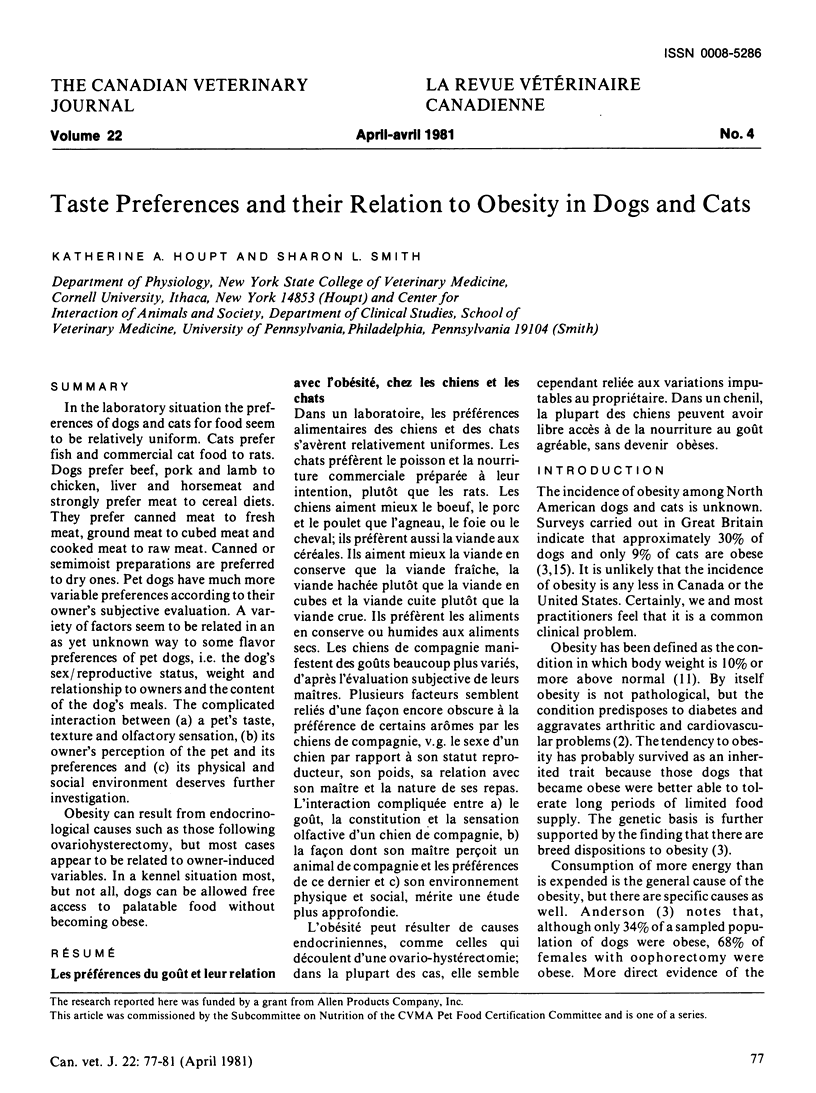
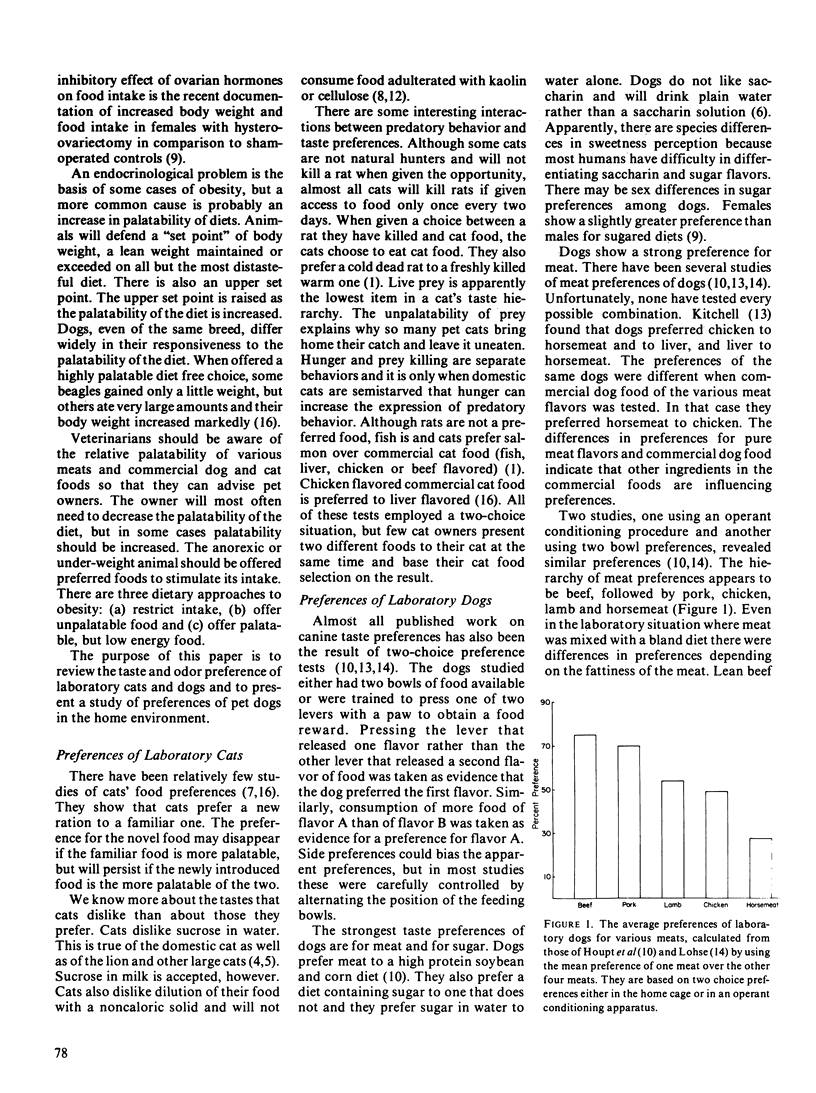
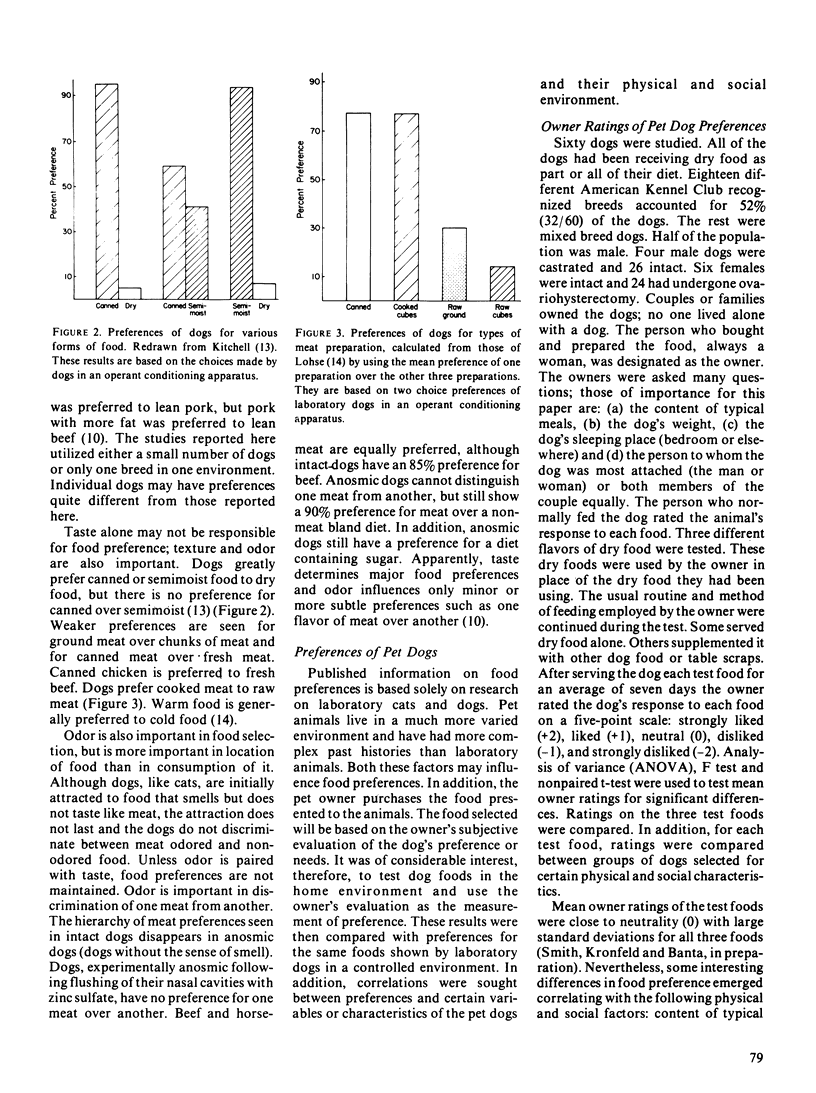
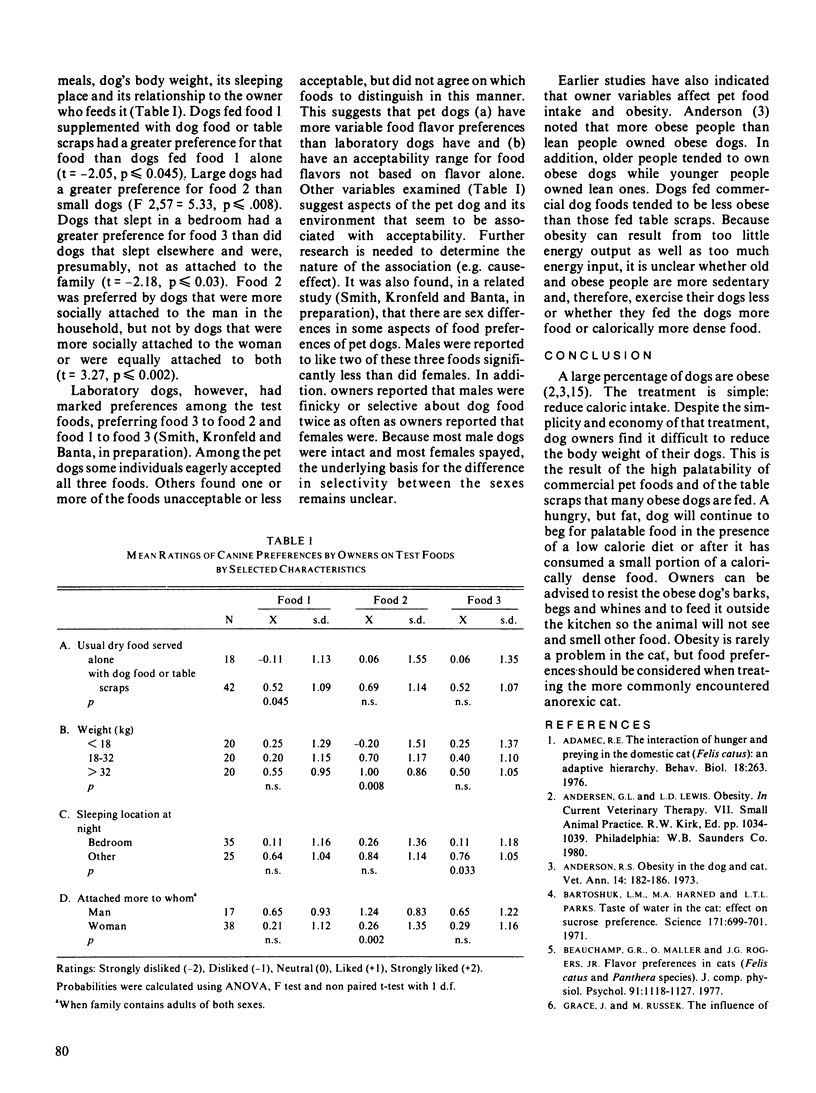
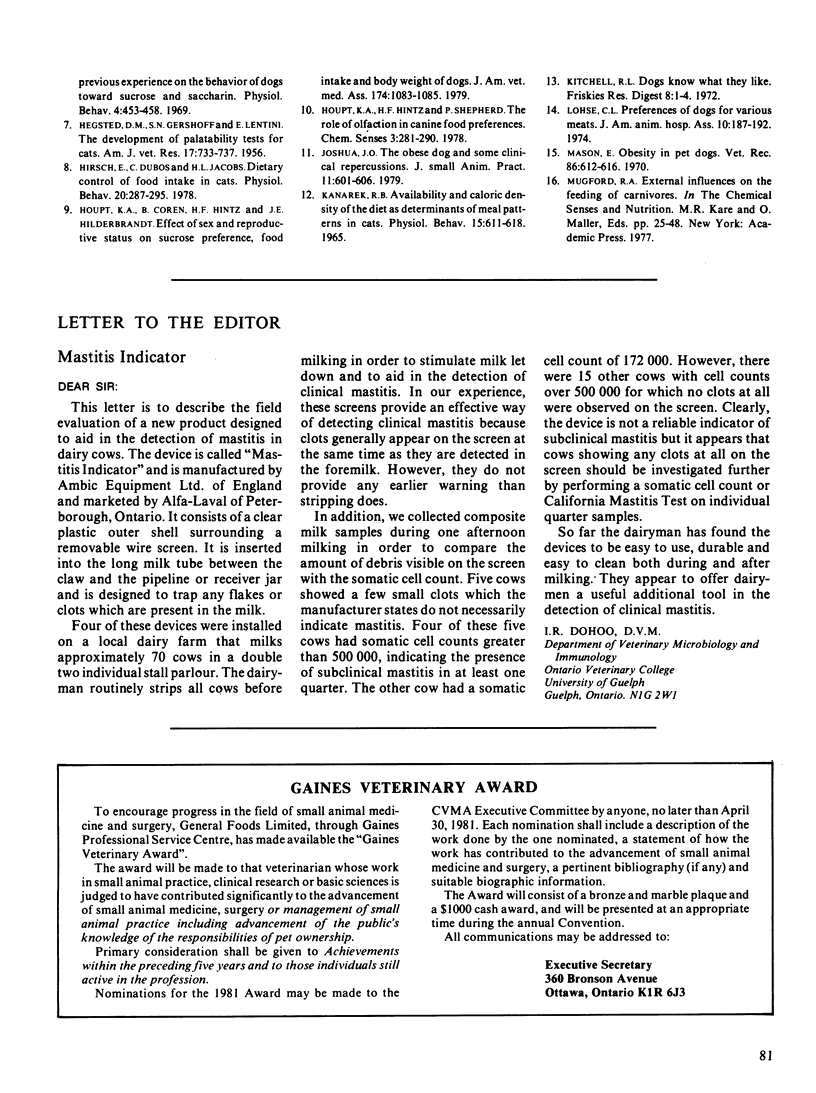
Selected References
These references are in PubMed. This may not be the complete list of references from this article.
- Adamec R. E. The interaction of hunger and preying in the domestic cat (Felis catus): an adaptive hierarchy? Behav Biol. 1976 Oct;18(2):263–272. doi: 10.1016/s0091-6773(76)92166-0. [DOI] [PubMed] [Google Scholar]
- Bartoshuk L. M., Harned M. A., Parks L. H. Taste of water in the cat: effects on sucrose preference. Science. 1971 Feb 19;171(3972):699–701. doi: 10.1126/science.171.3972.699. [DOI] [PubMed] [Google Scholar]
- GERSHOFF S. N., HEGSTED D. M., LENTINI E. The development of palatability tests for cats. Am J Vet Res. 1956 Oct;17(65):733–737. [PubMed] [Google Scholar]
- Hirsch E., Dubose C., Jacobs H. L. Dietary control of food intake in cats. Physiol Behav. 1978 Mar;20(3):287–295. doi: 10.1016/0031-9384(78)90222-6. [DOI] [PubMed] [Google Scholar]
- Houpt K. A., Coren B., Hintz H. F., Hilderbrant J. E. Effect of sex and reproductive status on sucrose preference, food intake, and body weight of dogs. J Am Vet Med Assoc. 1979 May 15;174(10):1083–1085. [PubMed] [Google Scholar]
- Joshua J. O. The obese dog and some clinical repercussions. J Small Anim Pract. 1970 Sep;11(9):601–606. doi: 10.1111/j.1748-5827.1970.tb05621.x. [DOI] [PubMed] [Google Scholar]
- Mason E. Obesity in pet dogs. Vet Rec. 1970 May 23;86(21):612–616. doi: 10.1136/vr.86.21.612. [DOI] [PubMed] [Google Scholar]


